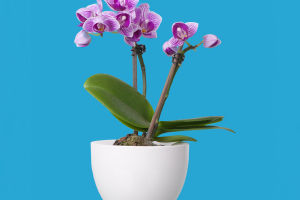Cherry tomatoes, with their vibrant colors and sweet, tangy flavors, are a favorite among gardeners and home chefs alike.
These small delights are not just tasty but also straightforward to grow, making them an excellent option for both beginner and seasoned gardeners alike.
This article explores the cultivation of cherry tomato varieties, detailing the steps from seed selection to harvest.
The first step in cultivating cherry tomatoes is selecting the right variety. There are numerous cherry tomato varieties available, each with unique characteristics. Popular varieties include 'Sun Gold,' known for its exceptional sweetness, 'Sweet 100,' which produces a high yield of small, red fruits, and 'Black Cherry,' which offers a rich, complex flavor. When choosing a variety, consider factors such as taste preferences, climate suitability, and growth habits (determinate or indeterminate).
Cherry tomatoes thrive in well-drained, nutrient-rich soil. Begin by choosing a sunny spot, as tomatoes need a minimum of six to eight hours of direct sunlight daily. Prepare the soil by removing any weeds and adding organic matter, such as compost or well-rotted manure, to improve soil fertility and structure. A soil pH between 6.0 and 6.8 is ideal for tomato cultivation. Conduct a soil test if possible and adjust the pH as necessary using lime to raise it or sulfur to lower it.
You can grow cherry tomatoes from seeds or buy them as seedlings from a nursery. If starting from seeds, sow them indoors about six to eight weeks before the last expected frost date. Plant the seeds in seed-starting trays filled with a high-quality seed-starting mix, covering them lightly with soil. Keep the soil moist and maintain a temperature of around 70-75°F (21-24°C) to ensure good germination. After the seedlings have grown their first true leaves, you can transfer them into bigger pots.
When the danger of frost has passed and the seedlings have grown strong enough, they can be transplanted into the garden. Before planting, acclimate the seedlings by gradually introducing them to outdoor conditions over one to two weeks. Plant the seedlings deep, burying part of the stem to encourage a strong root system. Space the plants about 18-24 inches apart in rows that are 36-48 inches apart to allow for adequate air circulation and growth.
Cherry tomato plants often require support to keep the vines off the ground and prevent fruit from rotting. Use stakes, cages, or trellises to provide support for the plants as they mature. Regular pruning can help maintain plant health and improve fruit production. Remove any suckers (the small shoots that grow between the main stem and branches) to encourage the plant to focus its energy on producing fruit rather than excessive foliage.
Regular and thorough watering is essential for cherry tomatoes. Ensure the plants receive deep watering consistently, keeping the soil evenly moist without saturating it. Mulching around the plants can assist in retaining moisture and controlling weeds. Feed the plants with a balanced fertilizer every two to three weeks, or opt for a phosphorus-rich fertilizer to encourage flowering and fruit development. Avoid excessive nitrogen fertilization, as it may promote excessive foliage growth rather than fruit production.


